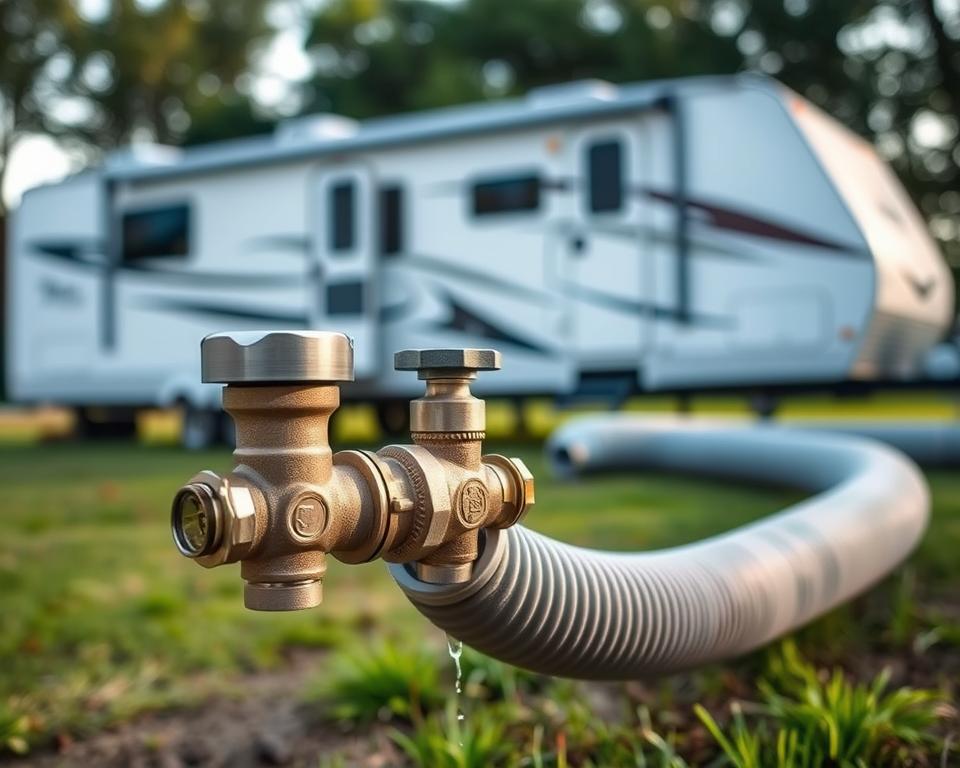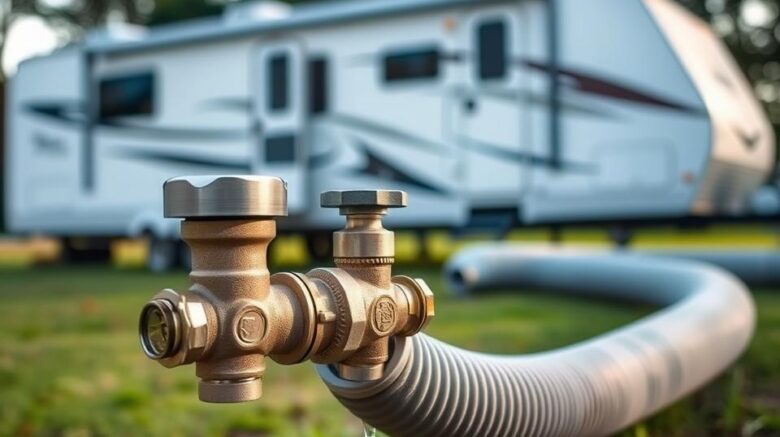Aerobic System Air Pump: Comprehensive Guide for Property Owners
Ever pondered on what drives your aerobic Septic setup’s output? The Septic air pump is the little-known champion integral for your system. Throughout this overview, readers will get useful know-how on the air Pump’s importance. It’s key for a healthy, well-run Septic tank.
Grasping the importance of a Septic tank air Pump can enhance your Septic system’s performance using RV septic pumping. It also preserves your asset value and surrounding ecosystem. Our handbook will introduce All in Sanitation, a leading Septic industry expert. They’re prepared to meet your Septic aerator Pump requirements.
Core Messages
- The Septic air Pump is crucial for aerobic Septic systems.
- Maintaining your Septic system air Pump can improve overall system operation.
- Periodic reviews increase the lifespan of your Septic tank air Pump.
- Picking the best-fit Septic aerator Pump is essential for top operation.
- All in Sanitation delivers specialized services for Septic air Pump needs.
Breaking Down Aerobic Septic Units
Aerobic Septic systems present a enhanced waste treatment approach by utilizing oxygen. This technique features aerobic bacteria living in well-oxygenated environments. These bacteria are highly effective in processing organic matter. With the help of Septic aerator Pumps, these systems deliver a consistent oxygen supply, improving the waste decomposition process.
These systems stand out in reducing sludge buildup, owing to the activity of aerobic bacteria. This decrease in solid waste means minimal cleaning and tank emptying is required. Additionally, they successfully handle wastewater, producing reduced odors. This produces a improved environment for homeowners and the community as a whole.
To make sure these systems run successfully, it’s necessary to understand the key Septic system components. These include the Septic tank, aeration chamber, and effluent Pump. Each component is vital, especially the air Pump. It forces oxygen into the tank, central for the aerobic bacteria’s activity.
Value of the Septic Air Pump
The Septic air Pump is key in the performance of aerobic Septic systems. It functions like the system’s “breathing mechanism,” pushing the necessary oxygen needed. This oxygen helps aerobic bacteria to thrive and break down waste quickly. If the Pump fails, the system’s effectiveness decreases, bringing about sludge accumulation and possible odors.
Such issues can undermine Septic system operations and create environmental hazards. By understanding how vital the Septic air Pump is, homeowners can take proactive steps. They can maintain its best function through scheduled service. This avoids failures, reduces costly repairs, and protects the aerobic system’s condition.
Major Benefits of Using a Septic Air Pump
Utilizing a Septic air Pump notably enhances the effectiveness of Septic systems. Septic air Pumps are vital as they accelerate the processing of waste. This is done by oxygenating the treatment process, stimulating aerobic bacteria growth. These bacteria are critical for efficient waste treatment.
They’re also helpful in minimizing foul smells. Because of more active aerobic processes, waste breaks down faster, thus cutting down odors. This creates a nicer atmosphere for homeowners.
Another significant benefit is the cut in sludge accumulation. Consequently, tanks require less frequent Pumping, saving both money and time. Better processing not only lowers bills but also extends the lifespan of the drain field.
Looking after these Pumps well means minimal repair costs and meeting regulatory standards. Thus, the pluses of Septic air Pumps go beyond being for homeowners. They also enhance environmental health by optimizing waste management practices.
| Benefit | Description |
|---|---|
| Fast Waste Breakdown | Enhanced aerobic activity quickens the decomposition process. |
| Minimized Odor Emissions | Better treatment efficacy results in fewer odors. |
| Reduced Sludge Buildup | Reduced Pumping and maintenance are called for. |
| Extended Drain Field Life | Better treatment translates to a healthier drain field. |
| Cost Savings | Lower probability of repairs and regulatory compliance cost. |

Selecting the Best Septic Air Pump
Selecting the best Septic air Pump is key for an optimized aerobic system. Homeowners ought to review various factors for the perfect selection. The dimensions of the tank and the airflow demands play a crucial role the Pump’s effectiveness.
To choose intelligently, it’s essential to be aware of the air Pumps available. There are mainly two types: diaphragm Pumps and rotary vane Pumps. Each comes with specific strengths, which should be suited with your home’s unique requirements and daily load.
Electric efficiency also deserves attention. Picking a Pump that minimizes energy use while providing the needed airflow can lead to significant savings. Help from All in Sanitation consultants can be extremely useful. They make certain the Pump you choose suits your system’s requirements precisely.
Common Types of Septic Air Pumps
Homeowners can decide more effectively by understanding the distinct Septic air Pumps available. There are mainly two types: diaphragm Pumps and rotary vane Pumps. Each has its specific functions and benefits.
Diaphragm Pumps, known for their low-noise operation, are favored for residential Septic systems. They maintain energy efficiency while supplying consistent airflow. Their constant performance suits smaller systems, meeting the needs of many homeowners.
Rotary vane Pumps, however, are better suited for higher-capacity or commercial systems. These Pumps deliver increased power, necessary for handling bigger loads. Their strong build allows efficient operation in broad Septic systems.
| Type of Pump | Best Use | Advantages |
|---|---|---|
| Diaphragm Pumps | Residential Systems | Quiet operation, energy-efficient, reliable air flow |
| Rotary Vane Pumps | Larger or Commercial Systems | Powerful performance, high capacity, durable construction |
Knowing the differences in Septic air Pumps is key for upgrades or replacements. Each Pump type offers particular attributes to address various needs. This secures best performance for any system.
Signs You Might Need a Septic Air Pump Replacement
Homeowners must look out for Pump failure signs in their Septic systems. Some signals indicate the need for a Septic air Pump replacement. These help maintain smooth operation. Noticing these promptly avoids major issues.
Signs of potential problems include:
- Unusual noises from the Pump, like grinding or vibrating, might signal internal damage.
- A clear lack of air output means the Pump isn’t functioning properly, affecting efficiency.
- Frequent electrical problems, such as blown fuses or lights dimming, could suggest overloading.
- Visible damage on the Pump unit, with fractures or leaks, calls for quick action.
- Offensive smells in the yard often indicate a compromised Pump, demonstrating ineffective effluent aeration.
Detecting these signs early heads off costly fixes or total system failure. Carrying out consistent assessments makes it easy to catch these issues. It also clarifies if you ought to have a new Septic air Pump.
Maintenance Tips for Your Septic Air Pump
For an efficient Septic air Pump, periodic care is necessary. This guarantees that your system runs well. Homeowners can use several straightforward care strategies for maximum results.
Half-yearly, perform a careful inspection for wear or damage. It is also necessary to swap out the filters as suggested. This prevents clogs that could hurt efficiency.
The Pump should rest on a solid base to lessen vibrations, which could wear it over time. A protective cover is important too. It shields against debris and water, maintaining the Pump’s functionality.
Proper maintenance can greatly prolong the life of your Pump. In turn, this supports the Septic system’s performance as a whole.
| Maintenance Task | Frequency | Benefits |
|---|---|---|
| Inspect Pump for damage | Every 6 months | Identifies issues early |
| Replace filters | As needed | Keeps performance up |
| Check surface stability | Annually | Limits wear |
| Clear debris around Pump | Monthly | Maintains airflow |
Installing Your Septic Air Pump
Effective installation of your Septic air Pump is critical for its efficient operation. First, find a safe, moisture-free area for placement. The chosen spot should reliably bear the Pump’s weight with ease.
To properly mount your Pump on your own, heed the following guidelines:
- Prepare all necessary items, including the Pump, a power source, and hose fittings.
- Check the manufacturer’s guidelines before commencing your installation.
- Confirm every connection is secure to prevent air leaks that compromise performance.
- After assembly, run a test to check the system works as intended.
If the installation process seems daunting, contact All in Sanitation. Their professionals can circumvent common errors, guaranteeing your setup adheres to necessary safety requirements.
Benefits of Choosing All in Sanitation for Your Septic Air Pump Requirements
When choosing a Septic service provider, the choice is crucial. All in Sanitation separates itself by supplying dependable Septic air Pumps. They satisfy different homeowner requirements with a broad selection of top-tier products. This guarantees customers discover an appropriate match for their Septic systems.
What further defines All in Sanitation is not solely their diverse product lineup. Their commitment to excellent customer service is also noteworthy. Homeowners receive specialist insight, steering them toward trusted Septic solutions. This partnership is important to personalize each solution to satisfy specific needs.
All in Sanitation also puts first aftercare to secure lasting satisfaction. Their commitment extends beyond the initial sale. They supply ongoing support to preserve Septic systems operating efficiently for the years ahead.
Financial Aspects for Septic Air Pumps
Appreciating the price factors linked to Septic air Pumps is vital for homeowners with aerobic Septic systems. Up front, one faces the price tag, which includes the Pump and associated accessories. Installation expenses change, based on the system’s complexity and any modifications required.
Ongoing upkeep forms an additional cost layer. Routine checks can head off bigger issues, which can mean savings. Homeowners should budget for Septic maintenance to keep the Pump’s effectiveness and service life. Such planning prevents expensive repairs later on, highlighting the importance of proactive maintenance.
| Cost Component | Average Cost Range |
|---|---|
| Septic Air Pump | $500 – $1,200 |
| Installation | $300 – $800 |
| Annual Maintenance | $150 – $400 |
| Potential Repair Costs | $1,000 – $5,000 |
Dividing Septic air Pump expenses into distinct parts assists homeowners in financial preparation. This detailed approach ensures the system’s reliable running and their reassurance.
In Summary
For homeowners with aerobic Septic systems, servicing Septic units is key. The right Septic air Pump enhances waste processing and extends your system’s life. Practising consistent service and quickly fixing issues prevents high expenses and disruptions.
Choosing a Septic air Pump requires deliberation. This guide highlighted how to choose wisely about installation and replacement. With All in Sanitation’s help, you can navigate your Septic systems’ complexities with confidence.
Attending to your Septic air Pump supports your system’s performance and durability. It secures a reliable and effective operation over time. Bear in mind, your home’s wastewater management relies heavily on regular attention.
